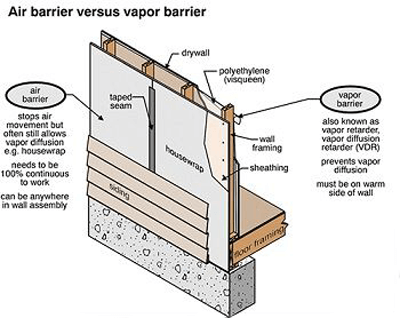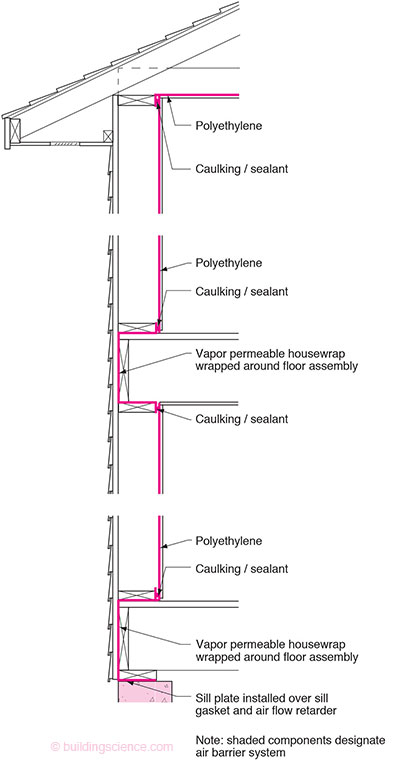House Wrap As Vapor Barrier For External Concrete Walls

As a result it can contribute to improved building durability by helping to protect homes against damaging wind and rain that can penetrate the exterior cladding.
House wrap as vapor barrier for external concrete walls. The purpose of using house wrap is to prevent the entry of moisture into the wall cavity from outside. Whether or not you need a vapor retarder hinges on three main factors. Very hot and humid climates may benefit from an exterior vapor barrier that keeps outside humidity from penetrating into walls. Dupont tyvek homewrap is the original house wrap incorporating unique material science that helps keep air and water out while letting water vapor escape.
Polywall blue barrier liquid wrap 2300 is a spray applied fully adhered permeable air and moisture building envelope protection membrane developed utilizing the latest in silyl terminated polyether technology stpe. You want the vapor barrier as far away from the cooler wall surface as possible. While house wrap is water resistant it typically is not water impermeable or waterproof with good reason. A vapor barrier against the concrete surface is generally recommended before wood framing or flooring materials are installed.
Moisture will find its way into these wall systems by way of cracked mortar joints gaps or cracks in the surface of the material. House wrap technically is a type of water resistive barrier or wrb. When building exterior walls with stone stucco brick when building exterior walls with stone stucco brick cedar eifs or fiber cement siding it is important to use an effective rain screen system that will provide a means for drainage and ventilation. Above grade exterior walls with semipermeable exterior finishes like brick over oriented strand board sheathing require the placement of an additional vapor barrier on the exterior side of the.
In hot humid climates the cool side of the wall is the inside of the home that s got air conditioning operating. A vapor retarder is a material used to prevent water vapor from diffusing into the wall ceiling or floor during the cold winter. R703 1 1 the exterior wall envelope shall be designed and constructed in a manner that prevents the accumulation of water within the wall assembly by providing a water resistant barrier behind the exterior cladding and a means of draining to the exterior water that penetrates the exterior cladding r703 2 water resistive barrier. Below grade walls and floor slabs transmit ground moisture through concrete walls or slabs.
After the insulation is in place you will want to add a vapor retarder sometimes called a vapor barrier if you need one.














































